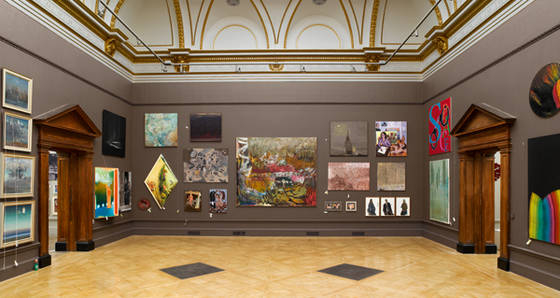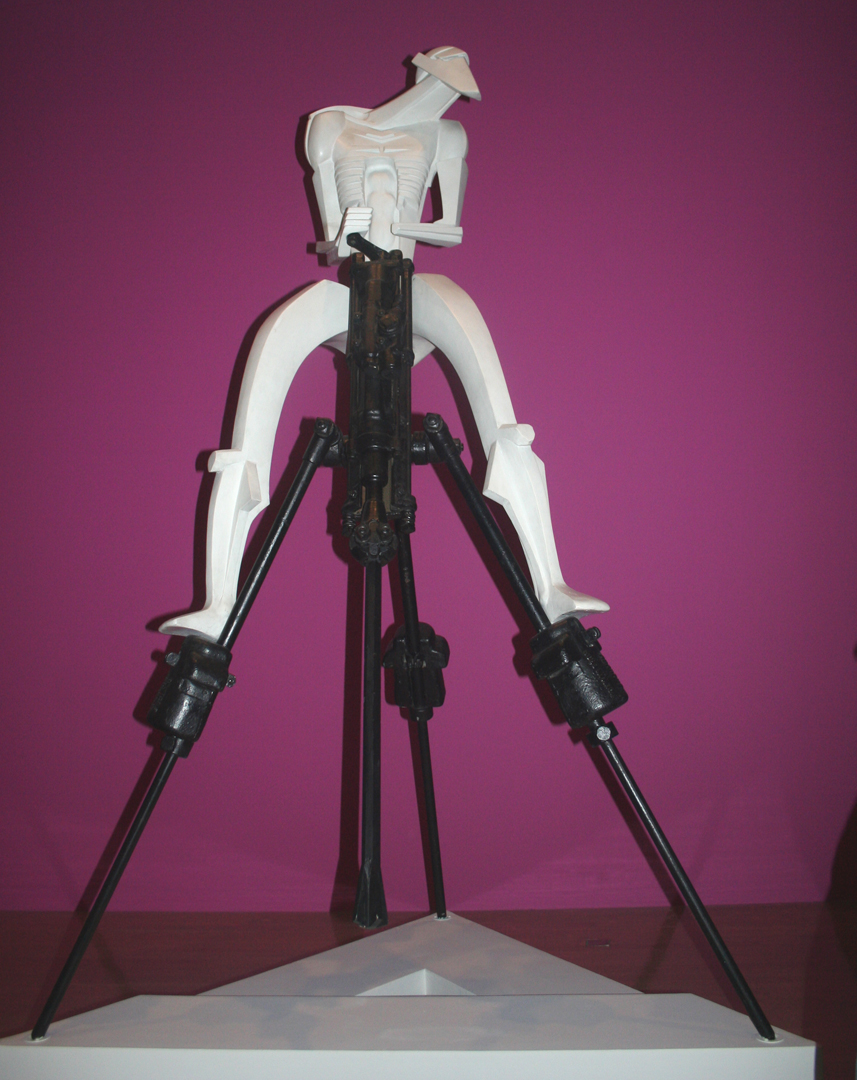- Details
- Hits: 3385
August 15th 2011
 This is the 243rd Summer Exhibition at the Royal Academy on Piccadilly, which means that it started in 1768. The Summer Exhibition heralds the start of important summer events, such as the Henley Regatta, and is the largest open submission art exhibition in the world.
This is the 243rd Summer Exhibition at the Royal Academy on Piccadilly, which means that it started in 1768. The Summer Exhibition heralds the start of important summer events, such as the Henley Regatta, and is the largest open submission art exhibition in the world.
It attracts some 11,000 entries, from which 1,117 pictures, sculptures and other artefacts are chosen. The selection process is a tough one, with a human conveyer belt handing on works of art to be put in front of the selection panel for acceptance or rejection. The selection process works like this; a submission is either marked with an X as rejected, or marked with a D as doubtful. What is left is whittled down by a panel of anonymous judges to a tiny selection.
- Details
- Hits: 3176
3rd August 2011
 The Vorticists were dominated by a two-man sculptural revolution consisting of Jacob Epstein and Henri Gaudier-Brezeska. Both artists were producing important works of modern art in Britain just prior to and during the Great War (1914-18).
The Vorticists were dominated by a two-man sculptural revolution consisting of Jacob Epstein and Henri Gaudier-Brezeska. Both artists were producing important works of modern art in Britain just prior to and during the Great War (1914-18).
Jacob Esptein’s massive The Rock Drill (1912) is a monolithic expression of masculine power. It is the first known sculpture to combine a ready-made object, the drill machine, with a work of art. A robot-like man, made of plaster is straddling the drill, intent on doing some real damage with it. This formidable image prophesises the violent use of machine guns during World War I.
Epstein later dismantled The Rock Drill and sold off the drill. He pared down what was left into a new sculpture, minus parts of the arms, both hands and legs, and recast it. The transformed Torso in Metal from The Rock Drill (1913-14) depicting the shattered and maimed consequences of the military-industrial age on the vulnerable, de-humanized form.
In contrast, his Female Figures in Flenite (1913), which is a name Epstein made up for the green and black stone called serpentine stone, are gestating women bearing reference to Oceanic, Polynesian, and African sculptures. With these pregnant, peaceful, fluid figures, he had dispensed with detail, concentrating on the essential form to produce something modern, yet extraordinarily primitive.
- Details
- Hits: 3198
05 May 2011
Sam Burcher goes to Bloomsbury for an evening of music, art and entertainment.
 Last Thursday, I had the pleasure of attending Richard Strange’s (frontman of Cabaret Voltaire, writer and broadcaster) delightful soiree at the Chapel of the House of St Barnabas in Soho, where he was talking to Richard Jobson (The Skids, writer and film director) and Cornelia Parker OBE (creator of the exploding shed as art).
Last Thursday, I had the pleasure of attending Richard Strange’s (frontman of Cabaret Voltaire, writer and broadcaster) delightful soiree at the Chapel of the House of St Barnabas in Soho, where he was talking to Richard Jobson (The Skids, writer and film director) and Cornelia Parker OBE (creator of the exploding shed as art).
A Mighty Big If is officially billed as being at number one Greek Street. But, in reality, the entrance to the gold-infused chapel is secreted on Manette Street, an unpretentious thoroughfare that joins Greek Street to Charing Cross Road.
The intrigued congregation, sitting comfortably on chiavari chairs in the chilly chapel under the high sweeping arches and alabaster pillars, were treated to much deeper insights into these creative minds than Wikepedia thought possible thanks to Richard Strange’s intimate questions. This arrangement works so much better than a ‘straight’ lecture.
- Details
- Hits: 2672
Sam Burcher reviews Jonathan Jeremiah at The Borderline, 6th December 2010
 Last night I went to hear Jonathan Jeremiah sing at the Borderline. I was there on the recommendation of Robert Elms (who is a fellow Blitz Kid and Radio London DJ) and to support what’s left of London’s small music venues.
Last night I went to hear Jonathan Jeremiah sing at the Borderline. I was there on the recommendation of Robert Elms (who is a fellow Blitz Kid and Radio London DJ) and to support what’s left of London’s small music venues.
The evening didn’t get off to the best of starts. The two tickets that I booked online had failed to arrive in the morning post, which nowadays is more like the afternoon post. So, with my printer out of action, I had to take my netbook along to the Borderline with my email receipt saved to the desktop as proof of purchase. It was only after a flurry of confusion that seemed to involve all the strangest feelings I’ve ever had going into a club, that my tickets were traced on their system.
After prising open the door into the venue, which seemed conspiratorially shut to a small band of latecomers, we were in, standing stock still on the stairs in the spindly presence and luxurious voice that is Jonathan Jeremiah. Looking suitably Christ like, sporting a beard and flowing hair, JJ was flanked by an understated and talented band of disciples playing trumpet, double bass, violins and soft shuffle drums, and sounding like a stunningly redolent hybrid of a young Frank Sinatra, Johnny Mathis and Phil Lynott, with a little something extra.








